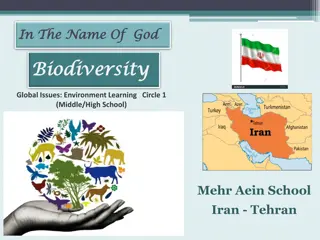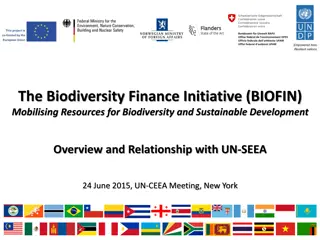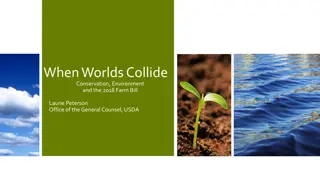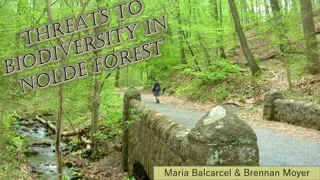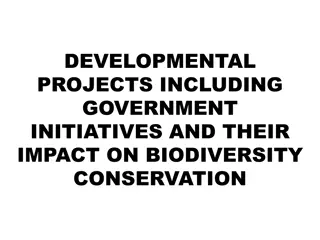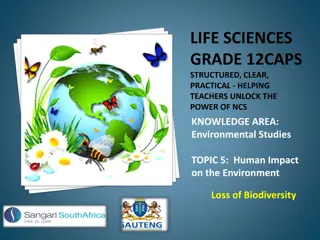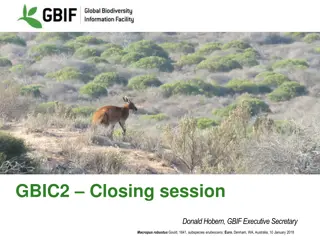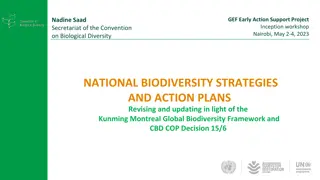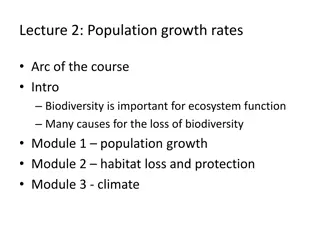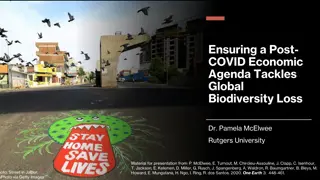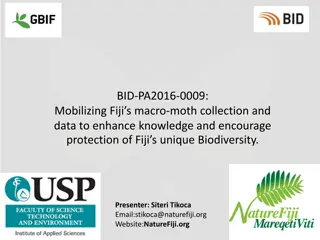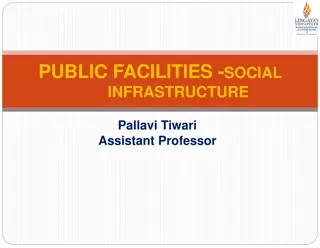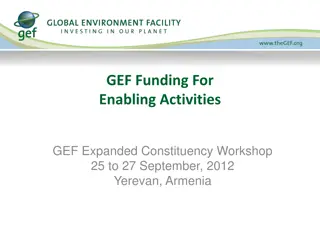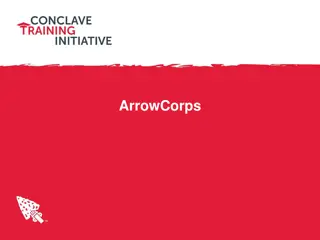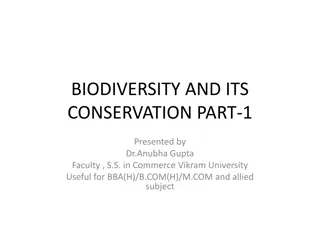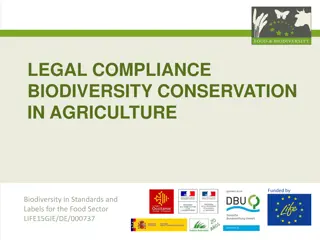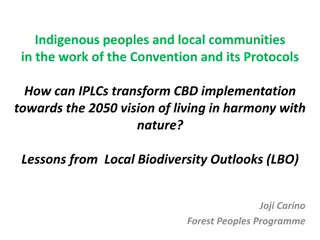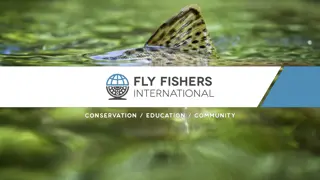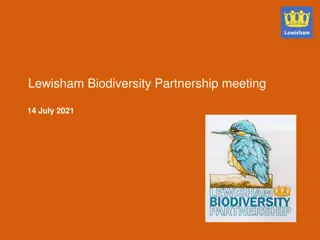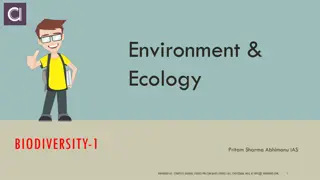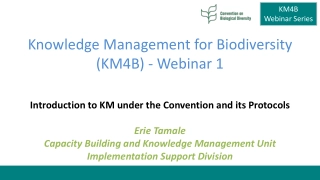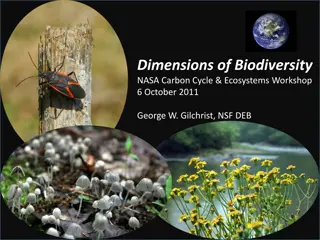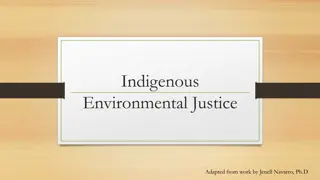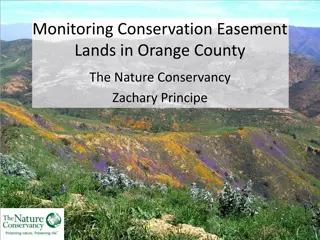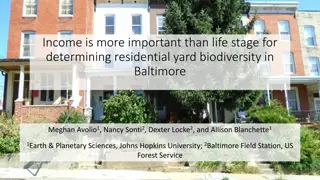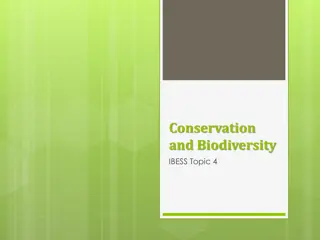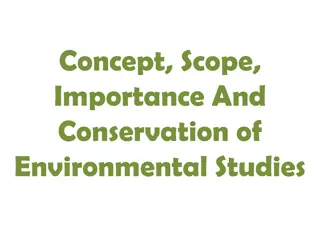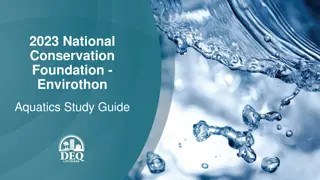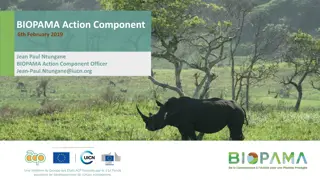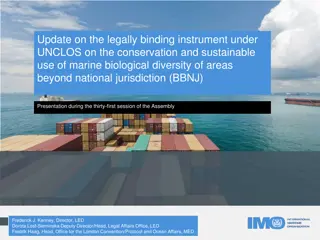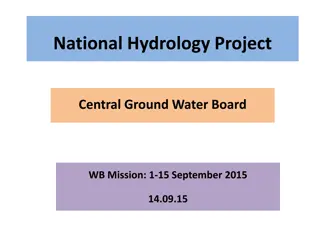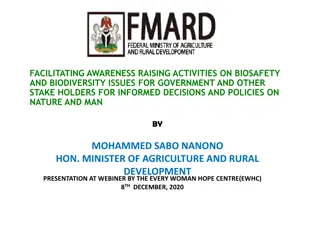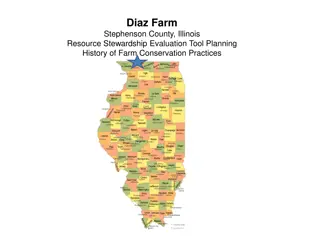Hydrology and Biodiversity of Agumbe: Conservation Efforts and Environmental Challenges
Agumbe, a village in Karnataka, is known for its rich biodiversity and high-altitude location in the Western Ghats. The ecosystem faces challenges like water crises due to deforestation and dry conditions, impacting the local flora and fauna. Efforts such as conservation, rainwater harvesting, and reducing deforestation aim to address these issues.
Download Presentation

Please find below an Image/Link to download the presentation.
The content on the website is provided AS IS for your information and personal use only. It may not be sold, licensed, or shared on other websites without obtaining consent from the author. Download presentation by click this link. If you encounter any issues during the download, it is possible that the publisher has removed the file from their server.
E N D
Presentation Transcript
Title : Hydrology and Biodiversity of Agumbe Bhuvan.V standard:9th 12/1/2022 LAKE 2022: Conservationof wetlands: ecosystem-basedadaptationof climate change, December 28-30, 2022 1
Introduction Agumbe is a village situated in the Thirthahalli taluka of Shivamoga district, Karnataka. Agumbe is a high-altitude village in the southwest Indian state of Karnataka. Surrounded by the Western Ghats mountains and lush rainforest. The village covers an area of 3 square kilometers. LAKE 2022: Conservationof wetlands: ecosystem-based adaptationof climate change, December 28-30, 2022 12/1/2022 2
Climate Agumbe lies in a rain forest region with tropical climate, warm and humid. Maximum temperature here is varied between 24.4 degree Celsius and 31.5 degree Celsius Minimum temperature varies between 16.2 degree Celsius and 21.4 degree Celsius April is the hottest month and the December is the coolest. LAKE 2022: Conservationof wetlands: ecosystem-based adaptationof climate change, December 28-30, 2022 12/1/2022 3
Hydrology LAKE 2022: Conservationof wetlands: ecosystem-based adaptationof climate change, December 28-30, 2022 12/1/2022 4
Flora Dipterocarpus indicus Dysoxylum malabaricum Garcinia indica Garcinia gummi gutta Vateria indicus Andenia hondala Celastrus panicultus Tarenna agumbensis Myristica dactyloides Aristolochia agumbensis Persea macrantha Hygroaster agumbensis LAKE 2022: Conservationof wetlands: ecosystem-based adaptationof climate change, December 28-30, 2022 12/1/2022 5
Fauna Lion tailed macaque Barking deer Cane turtle Flying lizard The Indian bison King cobra Atlas moth Selenops Drosophila agumbensis Gemnoconchus agumbensis LAKE 2022: Conservationof wetlands: ecosystem-based adaptationof climate change, December 28-30, 2022 12/1/2022 6
Water crises Agumbe is known as cherrapunji of south . Agumbe has gone dry due to deforestation excessive sand mining and prevailing drought conditions. The delay of April showers has led to the perennial going dry. Solutions Rain water harvesting Adaptation of water absorbing plants Reduce of deforestation LAKE 2022: Conservationof wetlands: ecosystem-based adaptationof climate change, December 28-30, 2022 12/1/2022 7
References https://en.wikivoyage.org wiki Agumbe https://tourism.webindia123.com tourism Agumbe https://www.weathercrave.com/weather https://www.thebetterindia.com/6003/tbi-wildlife-in- search-of-the-king-at-agumbe/ India.comhttps://www.india.com Travel Destinations LAKE 2022: Conservationof wetlands: ecosystem-based adaptationof climate change, December 28-30, 2022 12/1/2022 8
Acknowledgment I thank Vagdevi Vilas Institutions for giving an opportunity to be a part of IISC (Biennial Lake Symposium) LAKE 2022: Conservationof wetlands: ecosystem-based adaptationof climate change, December 28-30, 2022 12/1/2022 9




